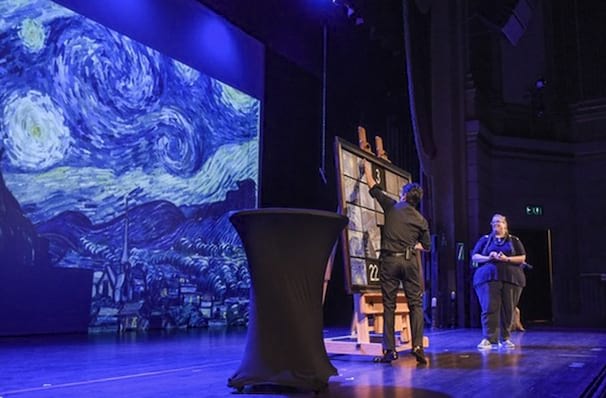

Theatre, for me, is at its best when imaginative surrender is combined with intellectual awareness – and brains are not deposited, along with one's overcoat, in the cloakroom.The art of illusion, or trompe l’oeil, as it is more commonly known, presents a scene in order to fool the viewer into mistaking it for reality. Or it may be that the element of pretence, which forms the basis of theatrical illusion, is being taken to child-like extremes. It may be that theatrical spectators, like those sad exhibitionists who wear fancy dress at Test matches, desperately want to be noticed. And at Saturday night's preview of Master Class at the Vaudeville, a lady behind me reacted with excitable indignation, or outraged delight, every time Tyne Daly's Maria Callas delivered a withering put-down to one of her singing students. I sat close to spectators at the Bush recently who "oohed" and "aahed" at every twist in a play's plot to signal their engagement. But I've also observed lately a self-conscious infantalism amongst audiences that almost verges on camp: in other words, a willed desire to behave like the rustic booby in the 18th-century novel who goes to see a performance of Othello and assumes it to be real. And only the other night, during O'Neill's Sea Plays at the Old Vic Tunnels, I detected a similar audible concern when an innocent Swedish seaman was about to fall into a trap that would deny him the prospect of ever returning home.Ĭlose emotional involvement is one thing. John Mortimer, when he was chair of the Royal Court's council, used to chuckle over the fact that, during Martin McDonagh's The Beauty Queen of Leenane, even Sloane Square sophisticates would cry out nightly at the moment when the mother in the play burns a crucial letter that will determine her daughter's future. When Judi Dench's Lady Macbeth invoked the "spirits that tend on mortal thoughts", she described a circle with a stick and then did an involuntary jump as if the forces of evil were indeed stirring beneath her skirts: the power of the actor, the intimacy of the space, even the darkness of an autumnal Warwickshire night led us all momentarily to believe in black magic.Įven in a rationalist age, I've noticed that audiences can get so caught up in a play that they suspend their habitual detachment. One of the most chilling experiences I've ever had in a theatre came at Stratford-upon-Avon's old Other Place in 1976. At times, what Coleridge called "that willing suspension of disbelief" can produce remarkable results. At the same time, we are assessing it, scribbling notes and – if we're writing for an overnight newspaper deadline – possibly structuring our review. We are caught up, with luck, in the world depicted on stage. For the critic, this dual response is even more acute.
#Art of illusion in theatre full#
One part of us knows perfectly well we are sitting in a theatre: the other part surrenders to the momentum of events on stage so that, as Brecht once wrote, "in a performance of Oedipus one has, for all practical purposes, an audience full of little Oedipuses". In one sense, you could say that the idea of illusion has never entirely gone way. And yet I see troubling signs of the return of an almost child-like credulity on the part of audiences. Even something as simple as allowing drinks inside the auditorium works against illusion. T he last 100 years have seen a constant battle against the concept of theatrical illusion: the idea that what we are watching is a plausible reproduction of reality.


 0 kommentar(er)
0 kommentar(er)
